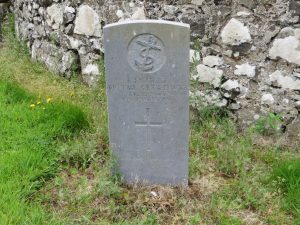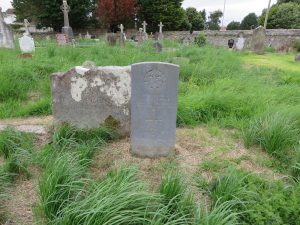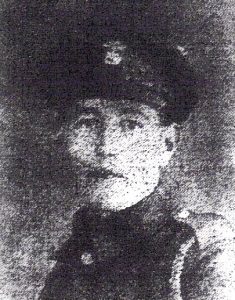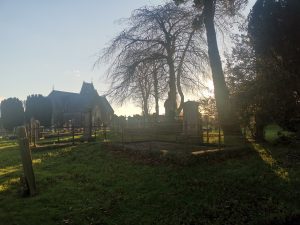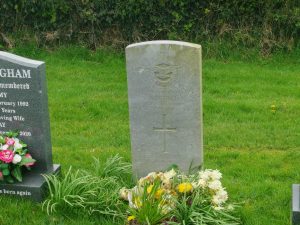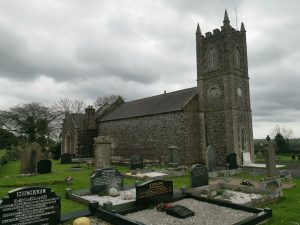Dunn, J (John)

Dunn, J (John)
Private John Dunn was from Keady, Limavady, Ireland. He was the son of John and Matilda Dunn. Born near Dunboe, Articlave, Co. Londonderry. He attested for the 10th Inniskillings on the 6th of April 1915.
John landed in France on the 25th of November 1915. He joined the battalion as they were in training and marching from area to area.
When the time came to celebrate the “Closing of the Gates of Londonderry (December 1668),” the battalion still had no casualties or real front-line experience. This is how their year ended.
During March 1916, they went to Forceville[1] and the trenches at Thiepval Woods[2] where they relieved the 9th Royal Inniskilling Fusiliers and started receiving their first casualties. This continued into April and up until May when they moved to Léalvillers[3] The battalion remained here until mid-June when they moved back to Forceville and the Thiepval Woods area.
On the evening of the 30th of June 1916, the battalion moved forward to take up their positions at Thiepval Woods. While walking through Aveluy Woods[4] towards the trenches the 10th Inniskillings commanding officer, Lieutenant Colonel Ross Smyth slipped and sprained his leg and was evacuated. A bad omen of things to come.
With the 9th and 11th Inniskilling Fusiliers on their right and 14th Royal Irish Rifles with them they waited in crowded trenches on the 1st of July for the bombardment of the German lines to finish. The men were all issued a portion of rum as they paused before putting their training into place and entering “No man’s land”, playing their part on the day of the “Great attack.”[5]
The battalions got mixed up as they advanced causing some confusement and even worse advancing too quickly. This caused heavy casualties from friendly fire. Within 100 yards of the enemy’s trench, they lay down awaiting the moment to attack. The company bugle calls soon followed announcing their orders to advance again.
All-in-all 764 men left the trenches, only 346 returned. The battalion eventually left the front line on the 2nd of July to regroup and rest, but only until August when they were redeployed at Ploegsteert Woods.[6]
Time passed by while the battalion continued to receive casualties and new recruits, raid German trenches, man trenches, bomb, be bombed and repeat. This continued until the end of October when they went to the village of Dranoutre,[7] to rest, bathe and be reissued uniform.
Private John Dunn though was admitted to hospital on the 30th of August 1916. He was suffering from pains in the abdomen and would not return to the 10th Inniskillings.
On the 26th of Sep 1916 he was transferred to HS Asturias[8]
and back to UK. He then transferred to 456th Agricultural Company.
Unfortunately, his health got worse and on the 4th of April 1918 at 5:45 PM, he eventually passed away in the Military Hospital, Cromarty, Scotland from a tumour in the abdomen. His grave marker says he died a month later.
John was awarded the 1914/15 Star, the British War and Victory Medals.
Date of Death: 04/05/1918 (Date the 4th of April 1918), (Aged 37, may have been 46 or 48)
Service: Private, 10th Bn. Royal Inniskilling Fusiliers, 456th Agricultural Company.
Service Number: 21180 and 545381
Burial Location: Balteagh Old Graveyard
[1] Forceville in an area in France in between Thiepval Woods and Léalvillers.
[2] Thiepval Woods is around 6 miles south of Hebuterne.
[3] Léalvillers is an area in France around 7 miles east of Thiepval.
[4] Woods just west of Thiepval Woods.
[5] Great attack, later called the Battle of the Somme.
[6] Ploegsteert Woods is in southern Belgium about 60 miles north of Thiepval Woods.
[7] Dranoutre is a small village in Belgium around 6 miles west of Ploegsteert Woods.
[8] HMHS Asturias was launched during September 1907, originally it was a Royal Mail ship, but got requisitioned as a hospital ship at the beginning of the Great War, in 1914. It was struck by a torpedo on the 20th of March 1917 by U-Boat UC-66. It did not sink and was repaired after the war, before being sold for scrap in 1933.
